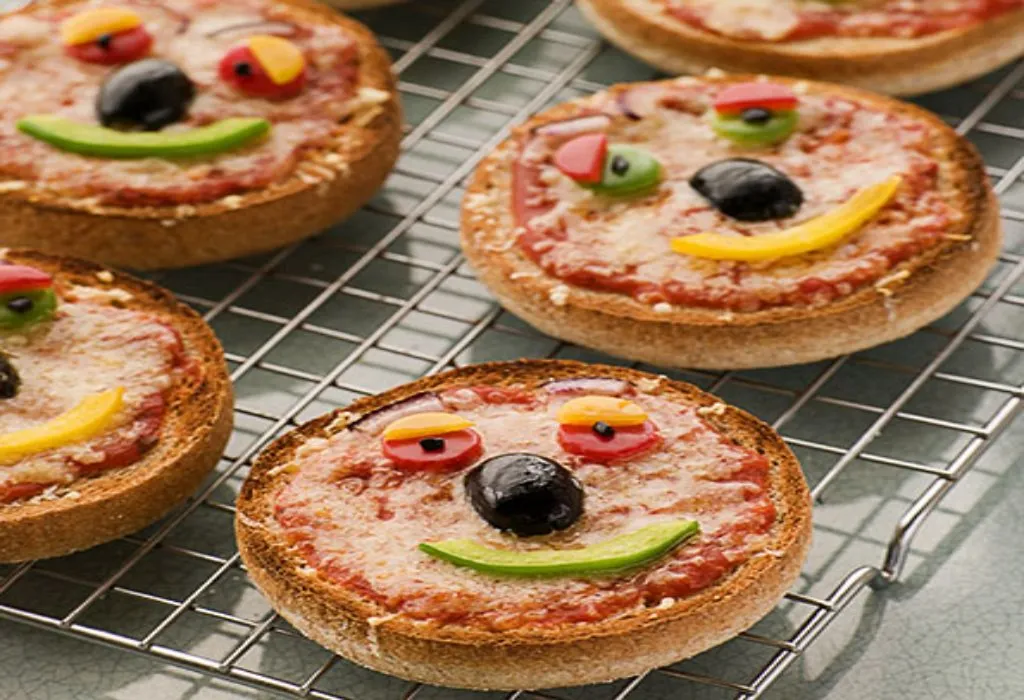How to Make Baby Eat Food Without Watching TV?
Every other parent has a fussy baby or toddler at home who refuses to eat a delicious and lovingly prepared meal! There are many reasons for this; it might be because he does not like to eat a particular vegetable or he does not feel hungry. Tired and worried about our baby’s eating, we often turn to the television for help. It distracts the child, and you can feed him a few more spoonfuls. However, we also know that this is an unhealthy habit and can trigger both poor eating habits as well as TV addiction. Once the addiction to TV kicks in, making a baby eat food without watching TV can get difficult. But how can we solve this problem? What can we do when the kids just won’t eat unless the TV is on?
Television watching while eating has become a very common habit – both in kids and in adults. However, it can turn out to be harmful in babies and toddlers as it affects both their focus on healthy eating and their desire to eat when the TV is not on. Such kids often face feeding trouble while travelling and when in a new environment. Plus, since kids need to be fed several times a day when they are babies/toddlers, this means extended exposure to television. This can impact their eyesight and make them overstimulated.
11 Ways to Make Foods Fun and Interesting for Kids
How to make a child eat food? We spoke to child nutrition experts and put together for you 11 tips that will definitely help you feed your little one, without the help of television. Over time, these tips will make sure your child gets adequate nutrition and eats without making a fuss.
1. Make Meal-Time a Family Event when Possible
The #1 rule to teach kids the principles of healthy and distraction-free eating is to make mealtime a family event. Make your child learn about the social aspects of eating and dining together by setting examples. Show that you are enjoying your food and finish it to make your child do the same. He will certainly follow your lead. Also, make it a point to have family meals to teach your child the importance of having food with family. Take meals on the dinner table rather than placing the plate in your lap, and keep all distractions like TV and mobile phones switched off, no matter how much fussing!
2. Make Him Eat with His Baby Friends
It is a good idea to occasionally invite your little one’s friends for lunch. Peer pressure might prove to be working in your favour in this case! Seeing his friends eat whatever food they are served can encourage your child to eat and finish his food. Plus, who needs the TV when other friends are present to play? You can ask your fellow moms from the society or neighbourhood to pool in for this.
3. Serve Fruits & Veggies Unusually
Feeding fruits and vegetables to babies and toddlers is one of the biggest food challenges we face! One solution for this is to create some fun with food! Serve fruits in an unusual manner. If your toddler does not like to eat fruits in raw form, serve him juices and shakes made using a blender to get the essential vitamins in his system. Add a scoop of his favourite ice cream over the banana or whip up a thick strawberry shake. Also, try giving him a bowl full of vibrant, fresh fruits that are nicely chopped and mixed with whipped cream and chocolate syrup. Look at this Bear Fruit Sandwich – it is an excellent and attractive meal that combines carbs with fruits. It is suitable for kids who are three years of age and older.

This principle applies to veggies too. We recommend making a nice veggie salad including broccoli, lettuce, corn, peas, carrot, bell peppers, capsicum, wheat pasta and black olives. Add salad dressing and low-fat mayo in good quantity for your little one to relish it!
4. Introduce More Exercise in the Day
One common reason that kids fuss at mealtime and demand that the TV be switched on is low appetite. Since they are not hungry enough, their focus is more on distractions and less on eating. It is critical that little ones get ample exercise to maintain their appetite and be healthy. Practice daily tummy time and basic hand-and-leg stretching exercises for babies. If your child is old enough, let him go for a quick run in the park or make him join swimming classes. Everyday exercise works on your toddler’s metabolism and thus makes him feel hungry.
5. Experiment With Food Shapes
Little children love animals and cartoons – there are a few exceptions to this rule! And when their food is served looking like an animal or a favourite cartoon, they are more than willing to at least give it a shot!
This needn’t be a time-consuming or difficult exercise. Simple cookie-cutters can help you with animal and flower shapes. It only requires a few minutes to assemble. This idea works even better when you serve the food in colourful bowls, tiffin boxes and feeding trays.

6. Slice Veggies & Fruits Like This
When the plate of food has fun, attractive-looking things, the TV will stop being more interesting! Many kids might hate eating veggies and fruits, but you need to be consistent with feeding these to them and slicing them into fun shapes is a good way of doing this. Slice your toddler’s food into unique shapes, such as cucumber sliced as ribbons or broccoli topped with conical (hat-like) tomatoes. This even works for other foods that come in interesting shapes, such as alphabet pasta or animal-shaped / alphabet cookies. Also, add some colourful items like bell peppers and carrots to make the dish look interesting and enticing to the little ones.
7. Involve Your Child in Grocery Shopping & Cooking
This is a good way to make your growing child feel more involved and interested in food. Make your kid a part of the grocery shopping and cooking process. Take him along to buy vegetables and take his help in the kitchen by making him wash the food items and stirring occasionally. This will make them willingly eat the dish as they have helped prepare it.
8. Start an Eating Contest
You can set up a fun eating contest on the table and challenge your child to it. For example, the one who finishes the salad in 5 minutes but chews it properly gets 5 minutes extra in the playground. A contest will keep your child engaged and focused on the food rather than on the TV. But don’t make it a habit, or else the child won’t want to eat without a contest and a reward!

9. Limit In-Between Snacking
Snacking between meals is a prime reason kids eat poorly at mealtimes! As a rule, don’t offer filling snacks between meals – this will reduce his appetite. Instead, give him a fruit, soup or salad to keep him going. Also, during mealtime, don’t push him to finish the meal quickly; let him take time to chew and eat. However, do not let him sit with the food for more than 30 minutes.
10. Give Food Fun Names
As per experts, little ones get distracted and bored very easily. This is because their attention span and ability to focus is still very low. This applies to food, too. A good way to get them interested is to give fun names to the food they are eating. You can try the names of animals, their favourite cartoon characters, or the names of their friends and other family members.

One great trick here is to name the food after your child; babies love the sound of their own name and will be tempted to eat something that is named after them. Anything works – from Nidhi’s Garden for fruit and veggie salads to Rahul’s Dragon Eggs for the boiled egg at breakfast!
11. Feed Him Food With Smileys
Babies love smiles! Not only do they brighten up the world around them with their cute baby smiles, but they also love being smiled at. This applies to their food, too. Many moms have found success with recipes that have an added smiley on top – with ketchup or coriander chutney, for example.

FAQ
1. What is the ideal time for serving children breakfast, lunch, snacks, and dinner?
For children, breakfast should be around 7-7:30 a.m., going enough time for lunch to be around 11:30 to 12:00 p.m. You can five afternoon snack to your little one around 2:30-3:00 p.m. and dinner by 5:30 to 6:30 p.m.
That’s it! Many moms have been able to make their children eat a well-balanced and nutritious diet by incorporating these appetite-boosting ideas into their routines. It will take time, patience and determination – but then, as moms, we have plenty of all that!
Also Read:
Tips to Soothe a Fussy Baby
How to Entertain a Baby Most Effective Ways
Tips on How to Make a Baby Smart and Intelligent
Wonderful Ways To Keep Your Baby Safe and Protected
Was This Article Helpful?
Parenting is a huge responsibility, for you as a caregiver, but also for us as a parenting content platform. We understand that and take our responsibility of creating credible content seriously. FirstCry Parenting articles are written and published only after extensive research using factually sound references to deliver quality content that is accurate, validated by experts, and completely reliable. To understand how we go about creating content that is credible, read our editorial policy here.























